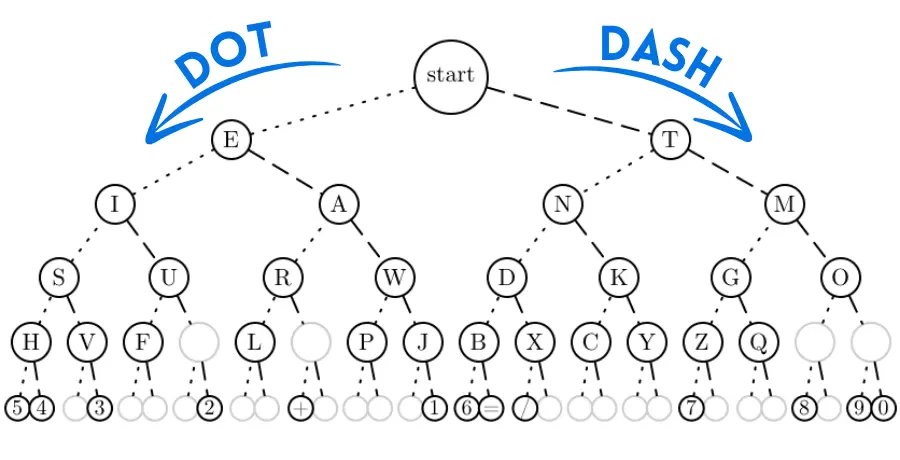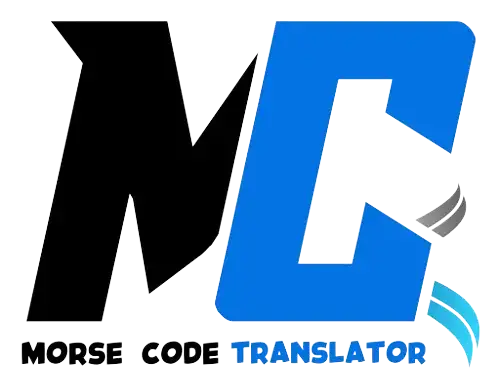Morse Code Tree | Encode & Decode Morse Code using a Binary Tree
Before presenting the use of Morse code tree it is crucial to learn the basic idea of binary trees. Binary tree is a structure of data which has at most two nodes, left and right. It is used to organise data hierarchically. On the other hand, morse code converter is a technique of encoding text messages in the form of dots and dashes which you can send through tapping, blinking, and many more other ways. Binary tree can be helpful in organising and representing morse code in easy manner. It allows to encode and decode code efficiently. Associating it with a binary tree can be created as:
- Root: representing starting point
- Dot: representing the left side
- Dash: corresponds to the right side.
Morse Code Tree Chart and PDFs

Advantages of Morse Code Tree
- Efficiency: It offers an efficient and effective way to find the sequences in Morse Code. This makes the process encoding and decoding fast forward.
- Visualisation: It provides a visual representation of morse code which is helpful in understanding the structure of different codes.
- Applications: International morse code binary trees are applied in data compression and telecommunication.
Use of Java for Implementing Morse code using a binary tree
Java is programming software which has easy to read syntax and therefore used to implement morse code binary trees. Java defines a structure and build a binary tree by giving nodes to each of the morse code dot or dash. It can also be used to encode (text to code) as well as decode (code to text).
The benefits of Java is that it makes the code’s maintainable by organising into classes. It can also easily catch the errors and mistakes and ensures the code is correct. Finally, as Java is widely used in enterprises, it proves to be a practical choice for such environment.
Morse code use in Python
Like Java, Python also is popular due to it being object oriented. Using the morse code it defines structure and define nodes. It manually adds the nodes and creates a tree and performs decoding and encoding. The benefits of using Python is that it has readable codes and quick to understand. Due to its versatility in library it is suitable for even large scripts.
Morse code and Huffman trees
Morse code binary tree and Huffman coding tree are closely related as both are used in data compression and to represent information in easy way. Huffman tree is also a binary tree which which generates prefix codes is more efficient and advanced than morse code. Morse code can also be used in specialised modern technology devices called embedded systems. Examples of these are Mars rover and Arduino project.
Utilising and learning Morse code trees
- It helps you understand how decoding and encoding works. It also helps in understanding algorithms.
- These trees can be implemented in programming languages such as Java, C++ and Python.
- Beyond these, It can be used practically in data compression and embedded systems.
- In order to learn and practice morse code binary trees you can utilise online resources such as different apps printable PDFs.
Conclusion
Morse code is a way of encoding text into dots and dashes whereas binary trees is a structure which visualises the morse code characters making them easy to read. Both morse code and binary trees have implementations such as Java, Python and C++. Talking about advanced implementations these can be used in embedded systems and data compression.
